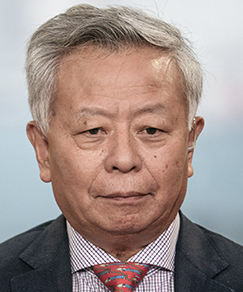The rise of China makes some people uncomfortable. The more embedded observers are in the status quo, the louder the criticism.
So when China proposed the creation of a development bank focused on infrastructure investment in 2013, the news was greeted with scepticism in many corners. Five years later, the Asian Infrastructure Investment Bank (AIIB) is slowly but steadily expanding its portfolio.
Now with more than 80 country members and some $560m in private sector co-financing on its books, the AIIB is seeking to address the perception that it is wrapped up in Chinese state interests.
“Misunderstandings are understandable, credibility has to be earned, trust has to be earned. You have to show your commitment by what you do not by what you say,” AIIB president Jin Liqun tells The Banker. “I have received a lot of delegations from the US and Japan, including at high levels, and we have all had very good conversations over a number of issues.”
Looking outwards
Japan and the US represent China’s main rivals on the regional and global stage, respectively. They also control two key multilateral banks: the World Bank has always been led by the US, while the Japanese dominate the Asian Development Bank (ADB).
The AIIB, for its part, wants to be seen as an international institution. “Ever since we started to operate we have been very committed to implementing high standards,” says Mr Jin. “We are very inclusive. We recruit people based on meritocracy, we have Americans, Japanese and Europeans working in our institution, we have fewer than 200 people with about 40 nationalities… [and] our infrastructure projects are open for international competitive bidding.”
Some elements of the bank’s structure make asserting total independence a challenge: China holds 28.7% of AIIB board votes, followed by India at 8.3%. As a US congressional research paper points out, this is the largest gap between the first and second largest shareholders at any multilateral development bank. Of the AIIB’s total initial endowment of $100bn, China has committed half the capital.
Critics in emerging markets contend that new competition for the older Western-dominated institutions is healthy. Meanwhile, the sheer scale of infrastructure financing needed worldwide – the G20 estimates globally there will be a $15,000bn infrastructure investment shortfall between now and 2040 – suggests that the more players that are involved, the better.
A joint effort
At the time of its founding, China’s president Xi Jinping said that the AIIB would “co-operate with existing multilateral development banks”, including the World Bank and the ADB. At the beginning of 2018, only about 30% of its deals were financed by the AIIB alone. Mr Jin wants to see that pipeline grow to 50%.
However, working with other development banks remains vital. “The development of projects in the infrastructure sector is usually very large. Even with the capital increase [of $13bn secured by the World Bank in 2018], it may still be necessary for the World Bank to co-finance with other institutions including ours,” says Mr Jin.
“We stand on the shoulders of giants. We owe a great deal to the World Bank Group and the European Bank for Reconstruction and Development for their support.”
Mr Jin pulls no punches when talking about the challenging economic outlook ahead, which is underscored by a marked decline in China’s growth and the ongoing China-US trade war. “We are fully aware of the impact of the global economic situation on some of our members, and the trade war will take a toll on some of the countries which depend very much on the Chinese market. So we are watching the macro situation very closely,” he says.
Given the nature of infrastructure projects, however, he is less concerned by short-term pressures. “My deep conviction is that we finance long-term development,” he says. “Over the past 20 to 30 years you see the business cycle. You see the countries affected by the 2006-09 financial crisis, some of the countries affected by the 1997 Asian financial crisis. Eventually these countries can work out their difficulties.”












